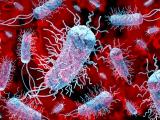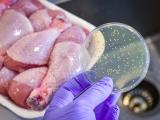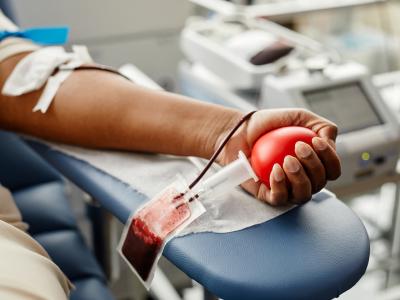Mar 12, 2008 (CIDRAP News) Researchers from Michigan State University have shown that genetic differences in Escherichia coli O157:H7 strains relate to virulence, confirming suspicions public health experts have had and shedding light on why patients in recent outbreaks seem to have had more severe symptoms.
Scientists have noticed a wide variation in the severity of E coli O157:H7 infections, the authors wrote. Patients struck by outbreaks in the early to mid 1990s had relatively low rates of hospitalization and hemolytic uremic syndrome (HUS), a serious complication that can lead to kidney failure or death. However, they pointed out that patients sickened in the 2006 spinach outbreak had high rates of hospitalization and HUS.
The patterns have prompted researchers to questions if outbreak strain virulence varies based on the presence and expression of various Shiga toxin gene combinations.
Researchers plot virulence map
To test the hypothesis, the authors used a real-time polymerase chain reaction system to identify single nucleotide polymorphisms (SNPs) in 96 loci in 528 E coli O157:H7 strains, of which 444 were collected from Michigan patients between 2001 and 2006. Their findings appear in an early online edition of the Proceedings of the National Academy of Sciences (PNAS). They included the other strains to represent different geographic sites and collection dates.
Upon phylogenetic analysis they found 39 SNP genotypes that differed at 20% of SNP loci and were separated into nine different clades. Each clade varied by distribution of Shiga toxin gene and by type of clinical disease. Researchers found that patients who had HUS were more likely to be infected with clade 8 strains, which they report have become more frequent over the past 5 years.
"Despite the small number [n = 11] of HUS cases identified, HUS patients were seven times more likely to be infected with clade 8 strains than patients from clades 1-7 combined," the authors wrote. They estimated that the frequency of clade 8 increased significantly among the Michigan patients whose E coli O157:H7 strains were included in the study, which they said was surprising, given the overall national decrease in such infections.
They also noticed other virulence patterns with different E coli O157:H7 clades. For example, patients infected with clades 2 and 8 were more likely to report bloody diarrhea than were patients with clade 7 strains. Female patients were more likely to be infected with clade 7 and 8 strains, and infections in those younger than 18 were more likely to be clade 8.
The researchers found no evidence that clade 8 recently emerged; they reported that they identified that type in clinical cases from 1984 on multiple continents. However, they wrote, "These results support the hypothesis that the clade 8 lineage has recently acquired novel factors that contribute to enhanced virulence."
Further study is needed into why the prevalence of clade 8 is increasing and what factors enhance its virulence and promote transmission in food and water, the authors wrote. They also said a rapid, inexpensive test to identify more virulent E coli O157:H7 subtypes would help laboratories identify patients who have a greater risk of HUS.
Finds expand knowledge, add new tools
Craig Hedberg, PhD, a food safety expert at the University of Minnesota in Minneapolis, told CIDRAP News that the study findings are important. "There have been several lines of research over the past decade that have pointed in this direction, although this will stand as the definitive paper to carry the argument," he said.
The study represents a continuing evolution in the understanding of E coli O157:H7, said Hedberg, who is an associate professor of environmental and occupational health. "Things start to make sense in new ways, and we can apply this new knowledge to our old data," he said. For example, E coli O157:H7 now appears to be highly clonal, though at one time researchers thought it represented a single clone. "People didn't think you could gain a lot from subtyping, but that proved to be shortsighted," Hedberg said.
"We're increasingly learning that what appears to be minor differences can have huge impacts on populations," he said of the different patterns that emerge with the clade 8 lineage.
SNP analysis may provide a useful surveillance tool for gauging the impact and progression of E coli O157:H7 illness outbreaks, Hedberg said.
The identification of a "hyperpathogenic" strain of E Coli O157:H7 probably won't have much regulatory impact, he said. "All O157 strains will still be considered adulterants in ground beef or ready-to-eat foods," Hedberg said. However, he added that public health officials may respond more aggressively if they know an outbreak involves a more virulent strain.
Manning DS, Motiwala A, Springman AC, et al. Variation in virulence among clades of Escherichia coli O157:H7 associated with disease outbreaks. Proc Natl Acad Sci 2008 (posted online Mar 10) [Full text]















